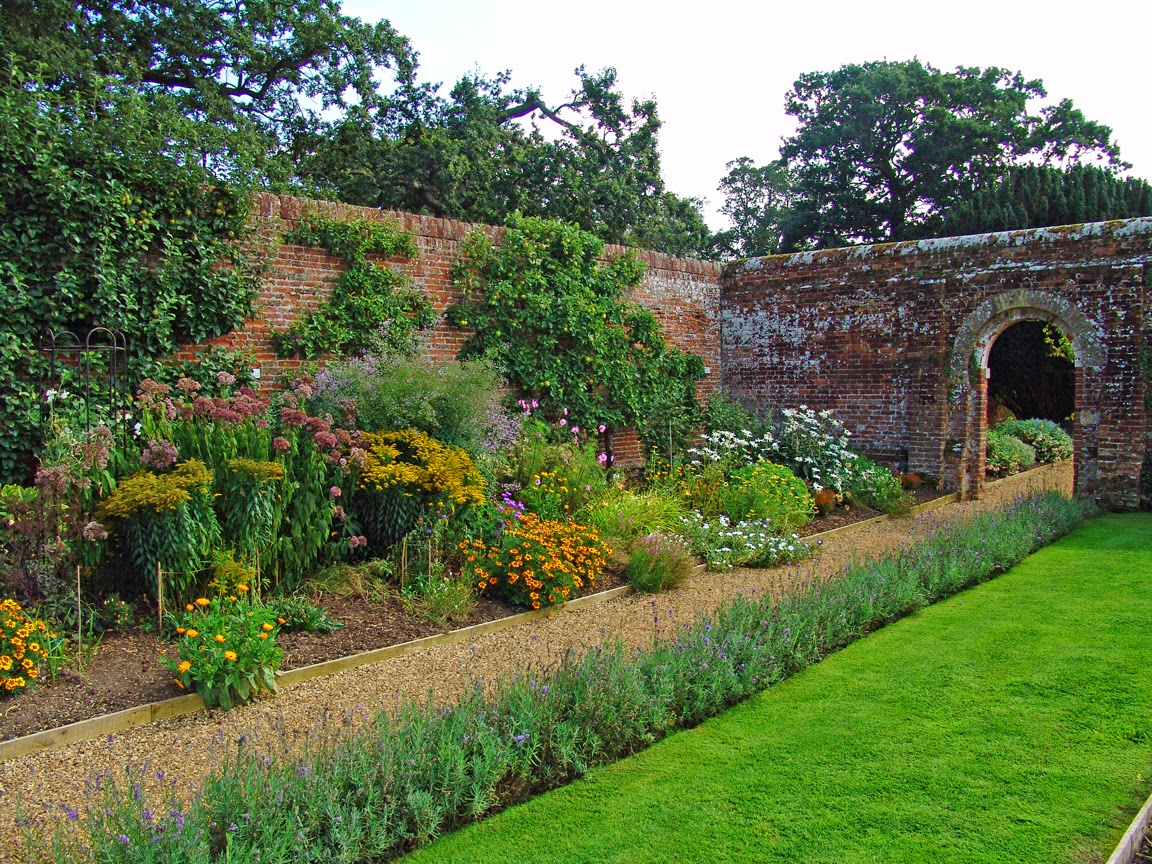Last year just before our visit to Blickling Hall, we had been at
Fellbrigg Hall, noted for its Jacobean architecture and Georgian interiors. Thanks to Peter's lifetime membership to the
National Trust we were able to stop in at many houses as we tootled around Norfolk.
Thomas Wyndham purchased the estate from the Fellbrigg family in the 17th century. The current house was probably built by his son John Wyndham.
It was extensively remodeled by his son William Wyndham II in the 18th century. Finally it passed into the hands of Robert Wyndham Ketton-Cremer, who was the last owner of the hall and who gave it to the National Trust in 1969. As with Blickling Hall, the last owner never married and had no heirs.
Today the estate covers 1760 acres, and is noted not just for the hall, but for the walled garden with its
columbarium.
The day we visited there were a few vintage cars out for a Sunday drive...
The Jacobean exterior with "Gloria Deo In Excelsis" built into the parapet flanked with heraldic beasts. (One thinks that the usual syntax of the latin was altered from "Gloria In Excelsis Deo" because of the need for architectural symmetry).
Below: The main entrance.
Above: A boot brush by the front entrance.
Below: A plan of the ground floor.
Just inside the front door was this statue of Hercules.
The the right you enter the Morning Room, with pictures of the Wyndham family adorning the walls.
Above and Below: Pictures in the morning room.
I am particularly taken by the painting above the fireplace of a group of country gentlemen and their dogs.
To the left of the front entrance one enters the great hall with its marble fireplace and dramatic ceiling...
Through the great hall one enters the dining room, in a pale lavender colour, with ornate plaster decoration around many family portraits...
The ceiling is equally ornate, with the centre medallion showing an eagle surrounded by hunting horns and riding crops, likely an allusion to hunting and shooting which provided many of the courses for a dinner at Fellbrigg.
Next we pass into the drawing room, originally known as the great parlour. Remodeled in 1751 by James Paine who paneled the room in oak and silk, and hung his art collection upon the walls, but retained the glorious Jacobean ceiling.
I love the crimson silk upon the wall with the gold filleting to hide the staples.
The cabinet room is adjacent to the drawing room and is the last room we enter before climbing the stairs to the library. Originally the drawing room in the 1680s, it was square and paneled until the bay window was added in 1751. William Wyndham II remodelled it for the purpose of displaying the art he had acquired on his grand tour, much of which still hangs in this room...
We now journey upstairs, first entering into the library and book room...
Like the cabinet room, William remodeled this Jacobean Great Chamber into his library with adjacent book room (I am not sure of the difference between a library and a book room?) It contains over 5000 books, Dr Johnson's Dictionary amongst them.
Below: The miniature bookcase contains books for the servants. These 23 little books contained tales of moral uplift including titles such as "The faithful servant" and "The annals of the poor".
Above and Below: A change purse and a postage stamp purse belonging to a lady of the house.
We then enter the bedroom wing, starting with the grey bedroom...
then the yellow and rose bedrooms before arriving at the red bedroom...
And finally the Chinese bedroom, decorated with 16 rolls of hand blocked oriental wallpaper from the East India Company in 1752 at great expense.
Descending the stairs at the end of the west corridor one comes across "Boy pulling a thorn out of his foot" by an unknown 19th century artist. The work is based on a bronze original in Rome.
After breezing through the "below stairs" block we were back out into the garden.
Above: The Victorian gothic windows.
Below: the castelations of one of the walls.
Above: A "Dog Park" - must have one of these at WBP.
Below: A milestone noting the distance to Aylesham (9 miles).
The walled garden...
A range of flowers and fruits in the potager, including passionfruit with their easily recognizable flowers...
Above and Below:
Espaliered Pears. They get the benefit of being on a south facing wall with the heat and sunshine (northern hemisphere).
Above and Below: The walled
potager garden
Above: A lone dove coasts above the
columbarium.
Below: The inside of the columbarium. It must have produced a lot of guano.
Below: The Guinea fowl in the orchard. They also had free ranging Orpingtons and a small stack of beehives.




















































































































No comments:
Post a Comment